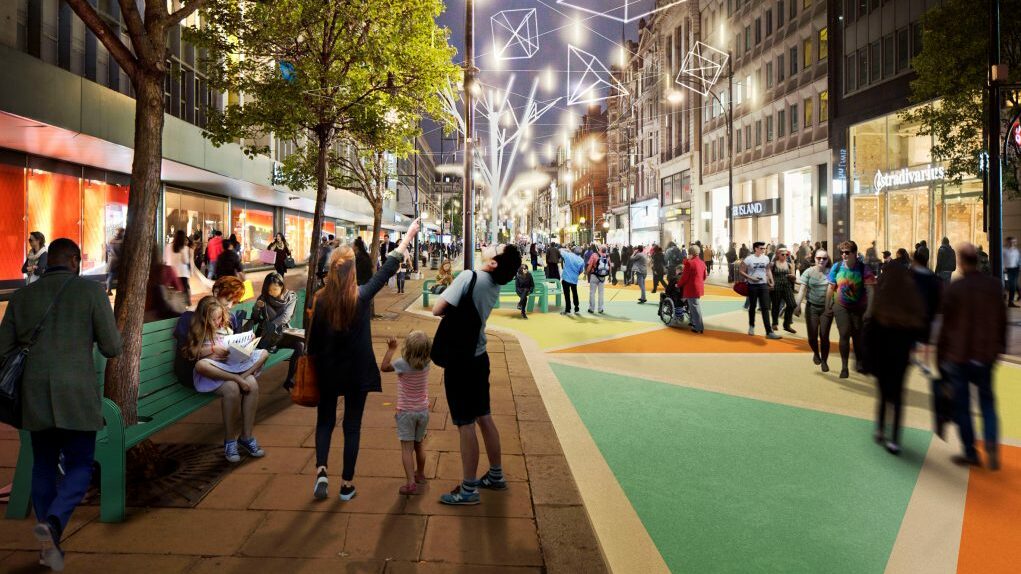
From a world full of darkness and crime, Medellín has stepped into the light – thanks to its own society, which remembered its values at the darkest moment. Here is the third part of this city’s story.
Billboard
Skyscrapper
Halfpage
Once known as the most dangerous city in the world, this January Medellín in Colombia was named the number one travel destination on the rise in South America. From a world full of darkness and crime, the city has stepped into the light – thanks to its own society, which remembered its values at the darkest moment.
The third part of the Medellín series by Alejandro Restrepo-Montoya is about new transport infrastructures and integral urban projects that allowed the city to be woven and integrated through its streets and public spaces.
The city of the new century
One of the most remarkable and profound thoughts that resulted from reflections about creating a better city was that a historical social debt had to be balanced, one that concerned the peripheral neighbourhoods and the city’s more distant places. Those places where the State was not seen, and where violence among the inhabitants and youth gave rise to to the illusion of making money in exchange for their own lives.
In these places, where violence had found ideal conditions due to a lack of opportunities and promises made to find a better living condition at any cost, the political administration arrived with its social development programmes, new infrastructure, education and culture. In places where previously there had only been space for violence, spaces were created for the community to meet.
Efficient connection with other spaces
The city approached its most remote neighbourhoods by connecting them to the centre viah new means of transport, such as the Medellín Metro, which linked the south with the north and the centre with the west in the mid-1990s. Later, other transport systems – such as the Metro cables to the northeast and western centre of the city – were planned in order to join with the layout of the metro and generate new connections with the most remote neighbourhoods, where a lack of accessibility had separated the inhabitants from urban structures. The articulation of these transportation systems allowed the inhabitants of those communities to have a faster, more efficient connection with other spaces in the city.
Over the years, in the surroundings of these transport infrastructures, integral urban projects were built that allowed the city to be woven and integrated through its streets and public spaces. New urban connectivities, educational spaces, schools, cultural spaces and other spaces, such as parks, new streets and squares, were planned and constructed so that the city’s inhabitants could meet each other.
The city and inhabitants of these neighbourhoods found in these public spaces places to see how life goes on. In their buildings they found other activities that had not been close to the environment they inhabited for years. Through public invitations and international architectural competitions, different urban spaces, new libraries, kindergartens and educational institutions were designed and built. The most beautiful projects were part of the urban development in the neighbourhoods occupied by those communities that – for years – had lived with violence. Thus, various sectors of the city began to intervene in the centre and in the north on the eastern and western slopes through the development of new transport systems and public spaces that articulated the life of the community.
Medellín’s social and urban transformation is the result of the reflections of the community, of different social and institutional sectors and academia, and of the political decisions made to improve the living conditions of the community.
In the new century the city began adding to these interventions in transport infrastructures with the construction of new public spaces and buildings for culture and education, where different activities are still part of community life.
Nearly 20 kindergartens were built as a result of public architectural competitions, where – through participation in open invitations – the guild of architects and urban planners could propose for improving the quality of life within these communities.
Medium Rectangle
Halfpage
A new mental structure
These activities were followed by physical interventions and specific improvements in more than 200 educational institutions; open space and sports venues were adapted to receive the South American Games in 2011. New connections – such as the Ayacucho tram in the centre of Medellín – were proposed. New Metro cable lines continue to be built and the city has intervened in different ways to benefit the communities that inhabit it. This city of the new century brought about a reduction in rates of violence through institutional presence, accompanied by the quality of urban space and the generation of meeting places where the citizens of tomorrow are educated according to modern parameters. We still believe that a child who takes a pencil or plays a musical instrument will never take up a weapon in order to attack his community. This way of thinking has allowed the inhabitants of the city to develop a new mental structure.
Through education, culture, care for families, high-quality public space and attention to the community, profound changes have been generated in the way of feeling and inhabiting a city that, until a few years ago, walked in the shadows, but – through culture, education, hope, dreams and the realisation of those dreams – has changed the mentality of its inhabitants and has improved the quality of life in our communities. The city that was developed and planned from the early XX Century, that city of industrial splendour that also attracted activities of illegality, that city reinvented from culture, education and public space, has given way to the city we now have today.
Click here for the first part of our Medellín series.
And here for part two.












